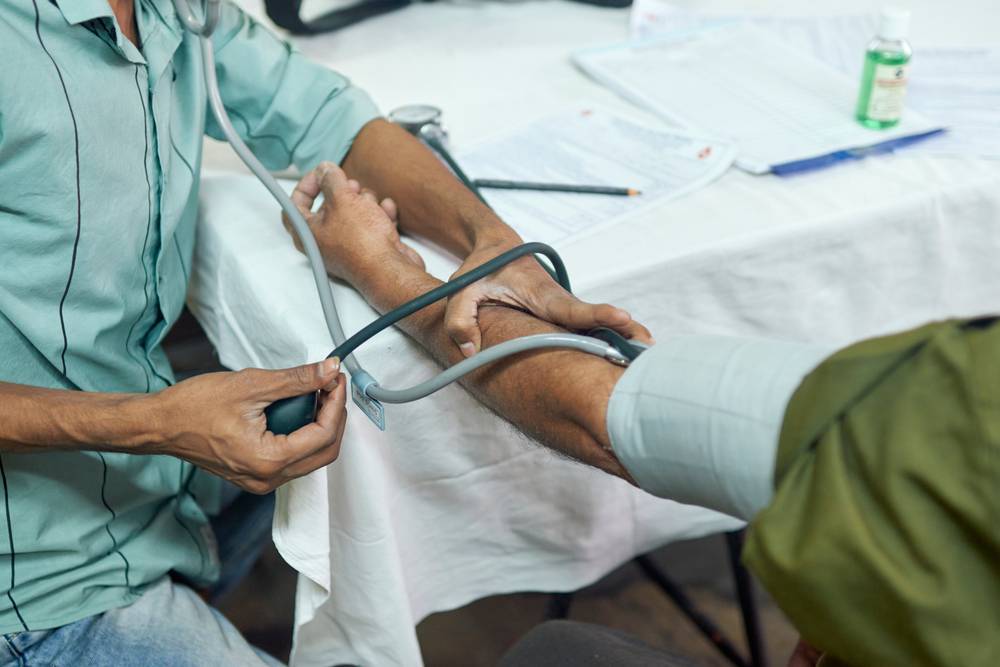When should we get started on hypertension treatment and which blood pressure medication works best for your condition?
In this article, we bring to you a breakdown of high blood pressure or hypertension treatment.
When should treatment start?
Treatment should be started no later than 4 weeks after a diagnosis of hypertension. If your blood pressure is high, or there is accompanying evidence of end-organ damage, you must start treatment immediately without delay.
What is first-line versus second-line treatment?
First-line treatment refers to the initial treatment you are put on. For adults with hypertension, any of the following 3 types of hypertension medications serve as initial treatment:
- Thiazide and thiazide-like agents (E.g., Hydrochlorothiazide)
Thiazide diuretics fall into a class of drugs called diuretics. They are effective in lowering blood pressure in the majority of patients. It helps reduce the fluid accumulation in the body by reducing the ability of the kidneys to reabsorb salt and water into the body, thus increasing the production of urine (diuresis).
- Angiotensin-converting enzyme inhibitors (ACEs)/angiotensin-receptor blockers (ARBs)
ACEs are effective in reducing the complications of hypertension such as heart attack and stroke and are able to slow the loss of kidney function in patients with chronic kidney disease. They work by blocking the action of the renin-angiotensin system. (RAS). During low blood pressure, renin is released from the kidney and generates angiotensin II, which constricts blood vessels, retains salt and water by the kidneys and raises blood pressure. Hence, these drugs target important hypertensive mechanisms.
ACE inhibitors and ARBs are the antihypertensive medication of choice for patients with heart failure and chronic kidney disease. They are indicated as first-line treatment for patients with chronic kidney disease with evidence of proteinuria. They are proven to have a cardioprotective effect in patients who carry a high risk of cardiovascular disease.
- Long-acting dihydropyridine calcium channel blockers (CCBs)
CCBs are effective in lowering blood pressure – they act directly on the blood vessels to cause relaxation. They are often used with diuretics or ACEIs to treat hypertension. They are effective in lowering blood pressure in elderly, black, obese, and diabetic patients. Lastly, they can also prevent stroke.
What’s the best second-line treatment for hypertension?
Second-line options are considered when patients fail to reach blood pressure targets with well-conducted treatment with thiazide diuretics, or if they did not tolerate this treatment well. There are many causes why the blood pressure target is not reached, including inadequate drug efficacy and other factors affecting blood pressure. Dual-agent therapy has an increased risk of adverse effects and drug interactions compared to monotherapy (single medication regime). There is currently no consensus among clinical practices for second-line therapy. Do speak to your doctor if on the best options for the second line of treatment.
Combination Therapy
Combination therapy will be considered when a patient fails a monotherapy for hypertension. For adults with hypertension, WHO suggests combination therapy, with a single pill combination as an initial treatment. For patients with stage 2 hypertension, a combination of two antihypertensive medications should be a therapeutic option. Antihypertensive medications used in combination therapy should be chosen from the above-mentioned 3 drug classes in first-line treatment.
Enhancing treatment outcomes
Patients should adhere closely to treatment, as well as monitor their diet and activity levels. If you have a home visiting nurse, they should monitor blood pressure and heart rate response to the treatment and identify early adverse reactions. If there are any adverse reactions, do contact them immediately. Do work closely with your team of nurses and doctors to achieve the maximal benefits of the treatment regimen and the best care delivery.
Both pharmacists and nurses should inform the clinician of any possible concerns of adherence, adverse reactions, or home environmental changes. This comprehensive interprofessional team effort helps to achieve the maximal benefits of the regimen and the best care delivery to the patient and family.
Conclusion
Treatment is just the tip of the iceberg, Apart from medication, do manage your entire lifestyle for ideal treatment of hypertension. We bring to you informative and detailed content on hypertension in this 4-part series on hypertension.

